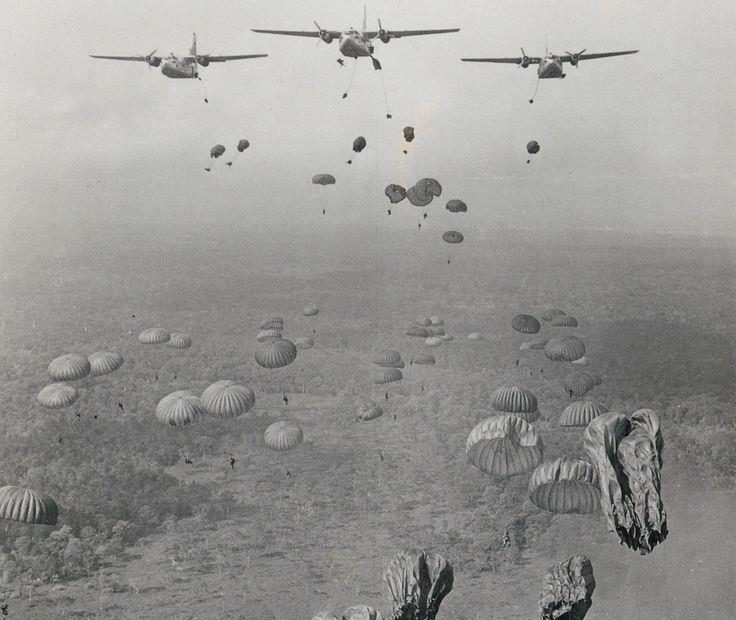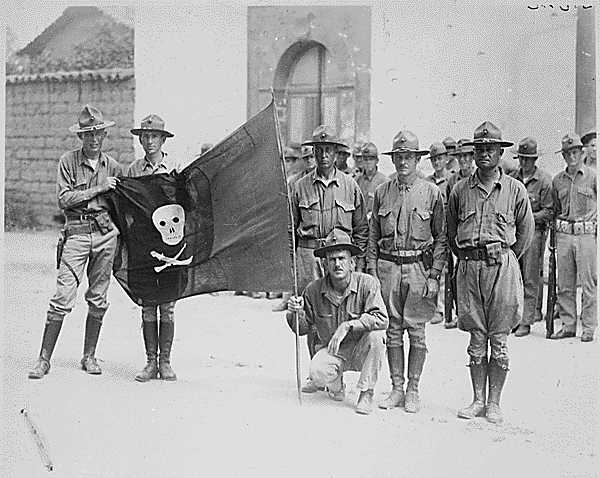In February 1967 in Vietnam’s Tay Ninh provice, an 82-day combat mission designated Operation Junction City, aptly named after Junction City, Kansas — the hometown of the operation’s commanding officer — kicked off. What distinguished this operation from many other routine operations in-country was the presence of a large-scale mass tactical (mass-tac) airborne assault component from the venerable 173 Airborne Brigade. That, and a healthy component of some 250 helicopters for assault in airmobile fashion.
In all, some 845 paratroopers from the brigade participated, jumping in daylight hours from C-130 Hercules and C-123 Provider cargo aircraft.
The concept of a mass-tac jump is to put as many paratroops on the ground in the smallest space possible and as quick as possible — it is a hollow honor to get shot while floating down to Earth in a parachute harness. Paras like myself resign to the concept of “big sky, little bullet” to usher away the anxiety of such a situation.
Taking out the ‘Bamboo Pentagon’

The mission objective for Operation Junction City was to locate, encircle, and destroy the 9th Viet Cong (VC) Division which represented the anvil of a hammer-and-anvil strike against the force, with the intent to annihilate it once and for all. Another major objective was to seek and destroy the elusive Central Office of South Vietnam (COSVN). This “office” reported directly to Hanoi and was responsible for directing all combat and psychological operations against the U.S. through the Viet Cong.
U.S. intelligence had long thought that the COSVN was a tangible container somewhere near the southwest of Saigon that housed a formidable staff and facilities for running a war. It was often clumsily referred to often as the “Bamboo Pentagon.”
In reality, the “office” was made up of a loose-knit team of highly mobile individuals in communication with Command and Control Hanoi. They could come and go at will, often set up in thatch huts in the jungle. They exploited the luxury of escaping across the Vietnamese border into Cambodia (Kampuchea) — as they certainly did during the execution of Operation Junction City.
The measure of success for this combat operation alludes me, to a degree. Certainly, the VC suffered heavy losses as the American fighting men combed repeatedly through their Area of Operations (AO) while vainly searching for any sign of the mysterious COSVN.
Related: The men with the green faces: The birth of the Navy SEALs in Vietnam
The uncertain outcome of Operation Junction City

As spoils go, in the aftermath of Operation Junction City, an estimated 600 tons of weaponry — mostly small arms — 810 tons of rice, and an assortment of 500 pages of intelligence reports were collected. That is a formidable gain as there was no computer storage in 1967, so when I say pages I mean palpable paper pages.
The Vietnamese Ministry of Defence places the death toll at 2,728 KIA, 34 VC soldiers captured, and 139 soldiers deserting their position of duty. The U.S. suffered 300 soldiers KIA and another 1,500 wounded, making Operation Junction City one of the major combat losses of the war.
Through the operation, the U.S. proved the effectiveness of employing troops in an airborne doctrinal capacity. It also proved the advantage of deploying armor (11th Armored Cavalry Regiment [ACR]) in overgrown areas where foliage was made short work of by Armored Personnel Carriers (APC) and tanks in the otherwise impervious territory.
Related: How the largest airborne operation in history went wrong

South Vietnam enjoyed a period of full control by the South Vietnamese Government until the VC who had fled en masse over the border to the sanctuary of the Cambodian jungle would return. Whereas once Cambodia had served as a logistics avenue, it was experiencing major expansion under the VC, a thing that did not bode swimmingly for Cambodia.
In spite of the favorable tactical results of Operation Junction City, the operation had fallen short on one of its primary objectives — to capture the COSVN — thereby failing to affect long-term strategic damage.
By Almighty God and with honor,
geo sends
Read more from Sandboxx News
- The special operations helicopters of the Vietnam War
- The unique weapons of MACV-SOG’s covert commandos in Vietnam
- Cowboy: A legendary commando in America’s secret war in Vietnam
- Assessing airborne status in US Army Special Operations Forces
- Special operations, 82nd Airborne test new precision sniper rifle




